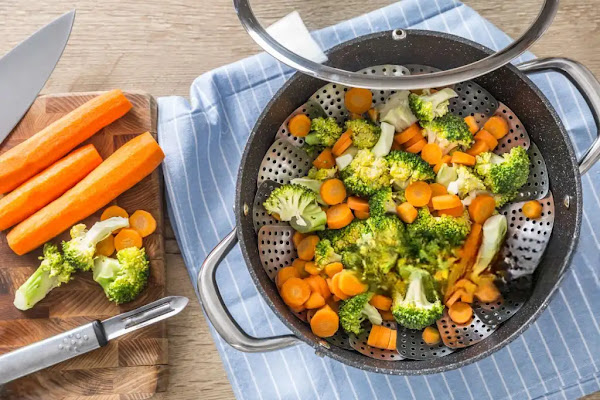Steaming is one of the healthiest ways to cook vegetables, as it preserves their natural nutrients, color, and flavor. Unlike boiling, which can cause nutrient loss, steaming gently cooks vegetables while retaining their vitamins and minerals. This guide will show you how to steam vegetables properly and get the most out of your meals.
Why Steaming is a Healthy Cooking Method
Steaming vegetables has several benefits that make it a preferred cooking method for health-conscious individuals:
- Preserves Nutrients: Steaming helps retain vitamins such as Vitamin C and B, which can be lost during boiling.
- Enhances Flavor: The natural flavors of vegetables are maintained, eliminating the need for excessive seasoning.
- Reduces Fat: No oil is needed, making it a low-calorie cooking method.
- Quick and Efficient: Steaming is a fast way to prepare vegetables without compromising quality.
Steps to Steam Vegetables Without Losing Nutrients
1. Choose Fresh Vegetables
Start with fresh, high-quality vegetables to get the best flavor and nutrient content.
- Pick Seasonal Vegetables: Choose vegetables that are in-season for the freshest options.
- Wash Thoroughly: Rinse vegetables well to remove dirt and pesticides.
2. Cut Vegetables into Uniform Sizes
Cutting vegetables evenly ensures they steam uniformly, preventing overcooking.
- Small Pieces for Faster Cooking: Chop vegetables like carrots, broccoli, and zucchini into bite-sized pieces.
- Leave Skins On: For vegetables like potatoes and carrots, leave the skin on for added nutrients.
3. Use the Right Equipment
A good steaming setup is essential for retaining nutrients.
- Steaming Basket: Use a stainless steel or bamboo steaming basket to hold your vegetables above the water.
- Covered Pot: A lid traps the steam, ensuring even cooking.
4. Add the Right Amount of Water
Too much water can cause vegetables to become soggy, while too little may result in uneven cooking.
- Keep Water Below the Basket: Ensure the water level is below the steaming basket to avoid direct contact with vegetables.
- Use Boiling Water: Start with boiling water to generate steam quickly.
5. Steam for the Right Time
Overcooking can lead to nutrient loss and mushy vegetables. Use a timer to get perfect results.
- Broccoli and Asparagus: Steam for 5-7 minutes until vibrant green and tender.
- Carrots and Potatoes: Steam for 10-15 minutes, depending on size.
- Leafy Greens: Steam for 2-3 minutes, just until wilted.
6. Season After Steaming
To retain nutrients, avoid adding sauces or salt during the steaming process.
- Light Seasoning: Use fresh herbs, lemon juice, or a pinch of salt after steaming for added flavor.
- Healthy Fats: Drizzle olive oil or sprinkle nuts for an extra nutritional boost.
Additional Tips for Perfect Steamed Vegetables
- Don’t Overcrowd the Basket: Allow space for steam to circulate around the vegetables.
- Experiment with Flavors: Add garlic, ginger, or spices to the water for infused flavor.
- Serve Immediately: Steamed vegetables are best enjoyed fresh to retain texture and nutrients.
Final Thoughts
Steaming vegetables is a simple and effective way to maintain their nutritional value while enhancing their natural taste. By following these steps and tips, you can enjoy perfectly steamed vegetables that are both healthy and delicious. Incorporate this method into your routine to take a step towards better health and mindful eating.
